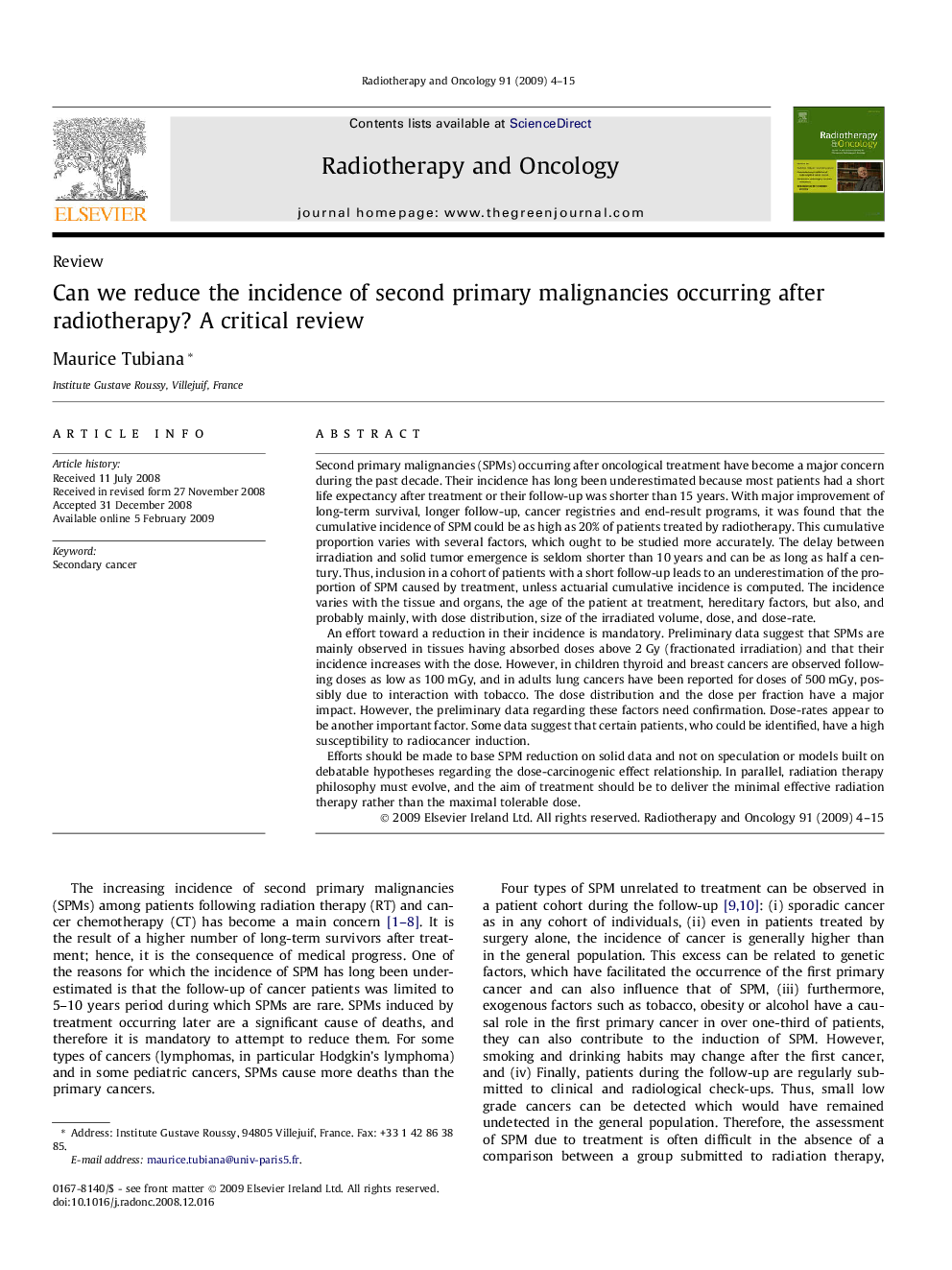| کد مقاله | کد نشریه | سال انتشار | مقاله انگلیسی | نسخه تمام متن |
|---|---|---|---|---|
| 2159428 | 1090858 | 2009 | 12 صفحه PDF | دانلود رایگان |

Second primary malignancies (SPMs) occurring after oncological treatment have become a major concern during the past decade. Their incidence has long been underestimated because most patients had a short life expectancy after treatment or their follow-up was shorter than 15 years. With major improvement of long-term survival, longer follow-up, cancer registries and end-result programs, it was found that the cumulative incidence of SPM could be as high as 20% of patients treated by radiotherapy. This cumulative proportion varies with several factors, which ought to be studied more accurately. The delay between irradiation and solid tumor emergence is seldom shorter than 10 years and can be as long as half a century. Thus, inclusion in a cohort of patients with a short follow-up leads to an underestimation of the proportion of SPM caused by treatment, unless actuarial cumulative incidence is computed. The incidence varies with the tissue and organs, the age of the patient at treatment, hereditary factors, but also, and probably mainly, with dose distribution, size of the irradiated volume, dose, and dose-rate.An effort toward a reduction in their incidence is mandatory. Preliminary data suggest that SPMs are mainly observed in tissues having absorbed doses above 2 Gy (fractionated irradiation) and that their incidence increases with the dose. However, in children thyroid and breast cancers are observed following doses as low as 100 mGy, and in adults lung cancers have been reported for doses of 500 mGy, possibly due to interaction with tobacco. The dose distribution and the dose per fraction have a major impact. However, the preliminary data regarding these factors need confirmation. Dose-rates appear to be another important factor. Some data suggest that certain patients, who could be identified, have a high susceptibility to radiocancer induction.Efforts should be made to base SPM reduction on solid data and not on speculation or models built on debatable hypotheses regarding the dose-carcinogenic effect relationship. In parallel, radiation therapy philosophy must evolve, and the aim of treatment should be to deliver the minimal effective radiation therapy rather than the maximal tolerable dose.
Journal: Radiotherapy and Oncology - Volume 91, Issue 1, April 2009, Pages 4–15